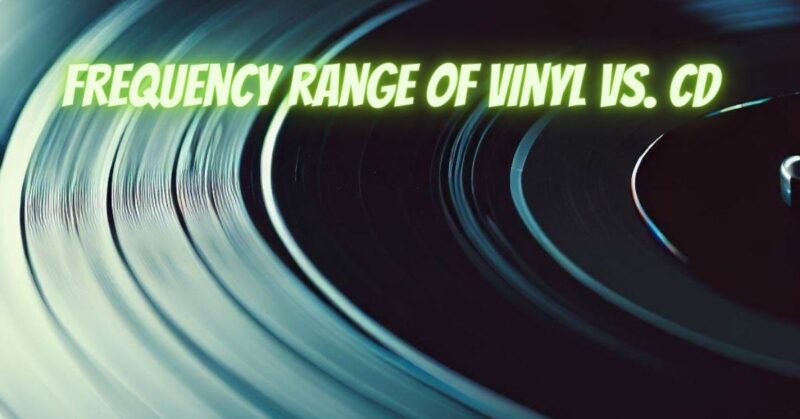When discussing the audio quality of music formats, the concept of frequency range plays a crucial role. The frequency range refers to the range of audible frequencies that a format can capture and reproduce faithfully. In the ongoing debate between vinyl records and CDs, understanding their respective frequency ranges provides valuable insights into their sonic characteristics. In this article, we explore the frequency ranges of vinyl and CD formats, shedding light on how they contribute to the overall listening experience.
CD Frequency Range: Digital Precision
Compact Discs (CDs) are lauded for their digital precision, which includes a wide and consistent frequency range.
CD Frequency Range Characteristics:
- Low Frequencies (Bass): CDs can accurately reproduce deep bass frequencies, allowing for impactful low-end sound reproduction.
- Mid Frequencies (Vocals and Instruments): The midrange frequencies, where vocals and many instruments reside, are faithfully captured by CDs.
- High Frequencies (Treble): CDs excel in reproducing high-frequency details, ensuring the clarity of instruments like cymbals, strings, and high-pitched vocals.
Vinyl Frequency Range: Analog Nuances
Vinyl records, with their analog nature, possess a distinctive frequency range that contributes to their warmth and character.
Vinyl Frequency Range Characteristics:
- Low Frequencies (Bass): Vinyl records can reproduce bass frequencies well, but they might have limitations in capturing extremely deep bass due to the nature of the physical grooves.
- Mid Frequencies (Vocals and Instruments): The midrange frequencies on vinyl contribute to its characteristic warmth and organic sound, often associated with analog playback.
- High Frequencies (Treble): While vinyl records can reproduce high frequencies, their performance might be affected by factors such as the quality of the recording and playback equipment.
Analog Warmth vs. Digital Precision
The frequency range comparison between vinyl and CD is not necessarily about which one is better, but about the unique qualities each format brings to the table:
- Vinyl’s Analog Warmth: The vinyl frequency range, while potentially not as extensive as CDs, contributes to the analog warmth and character that many enthusiasts adore. The inherent imperfections and nuances of vinyl playback add to its charm.
- CD’s Digital Precision: CDs boast an accurate and consistent frequency range that faithfully reproduces the original recording. High frequencies are captured with precision, making CDs ideal for music with intricate detail.
Listening Experience and Personal Preference
The choice between vinyl and CD frequency ranges is tied to personal preferences and the listening experience you seek:
- Audiophile Nuances: If you appreciate the organic warmth and character of analog playback, vinyl’s frequency range might resonate with you.
- Detailed Sound: If you prioritize accurate reproduction and detailed sound, CDs’ broader and consistent frequency range might be more appealing.
- Playback Equipment: The quality of your turntable, cartridge, speakers, and CD player can significantly impact how you experience the frequency range of each format.
The frequency range of vinyl and CD formats is a key factor in shaping their respective sonic profiles. Vinyl’s analog warmth and imperfections, coupled with its unique frequency range, evoke a sense of nostalgia and connection to music’s past. CDs, on the other hand, excel in digital precision and accuracy, providing a detailed and consistent listening experience. As you choose between these formats, consider your musical preferences, the equipment you have, and the emotional connection you seek to establish with the music. Ultimately, whether you’re drawn to the analog charm of vinyl or the digital clarity of CDs, both formats offer distinct ways to engage with the sonic tapestry of your favorite tunes.


